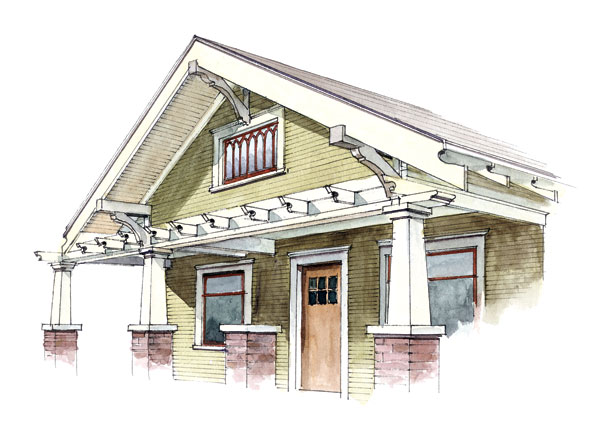
Perhaps the most identifiable feature of the Arts and Crafts style is the bracket. From furniture to Architecture, the simple bracket illustrates the philosophy of the movement: simple, functional adornment. As a reaction to the perceived excesses of Victorian exuberance and fussiness, the Arts & Crafts movement sought to bring beauty to a broader audience through the economy and restraint of design through the expression of the structural connections. In architecture, the broad roofs of simpler buildings blurred the distinction between indoors and outside, and allowed the expression of the structure at the rafter tails, beams and overhangs. Brackets were used as a way to express the connection between beam and column, and to support the broad overhangs at gable ends. Since the pitched gable or “fly” rafter was expressed rather than supported by the rest of the structure with “outriggers” concealed within an applied soffit, brackets were necessary. The detailing and proportions of the bracket members could also convey additional influences, from curves of English style to repetitive stacking referring to Japanese design
